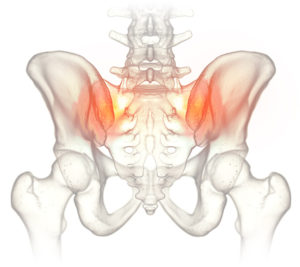What is SI Joint Instability?
 The sacroiliac joints (SI) are the foundation of the spine and are located at the junctions of the sacrum and ilium on each side. These complex joints, composed of systems of ligaments and multiplanar joint surfaces, transmit the forces exerted through the spine from the upper body to the legs. The SI joint is designed to absorb shock forces and is naturally constrained to only limited movement. Instability in the SI joint is a major pain generator in some patients. Although there have been many advances in surgical techniques to address instability problems in the lumbar spine, instability in the SI joint has remained relatively unaddressed, with most patients running out of options once conservative treatments have failed to offer continued relief from painful SI symptoms.
The sacroiliac joints (SI) are the foundation of the spine and are located at the junctions of the sacrum and ilium on each side. These complex joints, composed of systems of ligaments and multiplanar joint surfaces, transmit the forces exerted through the spine from the upper body to the legs. The SI joint is designed to absorb shock forces and is naturally constrained to only limited movement. Instability in the SI joint is a major pain generator in some patients. Although there have been many advances in surgical techniques to address instability problems in the lumbar spine, instability in the SI joint has remained relatively unaddressed, with most patients running out of options once conservative treatments have failed to offer continued relief from painful SI symptoms.
Causes of SI Joint Instability and Pain
• Prior injury or accident
• Postpartum pelvic girdle pain
• Ligamentous loosening due to pregnancy
• Arthritis
• Osteoarthritis
• Low back instability or prior low back surgery
Common Symptoms of Sacroiliac Joint Dysfunction
As with other joints in the body, the SI joint can become damaged, can suffer from wear and tear, or the ligaments supporting the joint may be stretched or injured. Sacroiliac joint dysfunction and the associated pain can be caused by a specific traumatic event (disruption) or can develop over time (degeneration).
• Low back pain
• Pelvis/buttock pain
• Lower extremity pain
• Hip/groin pain
• Problems sitting, sleeping, or walking




